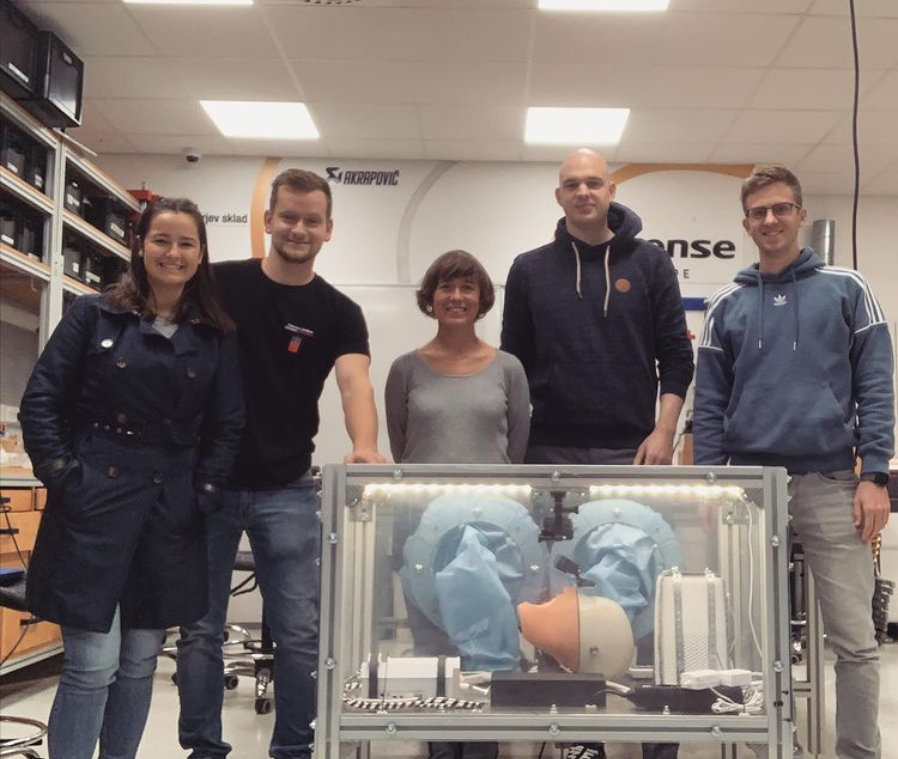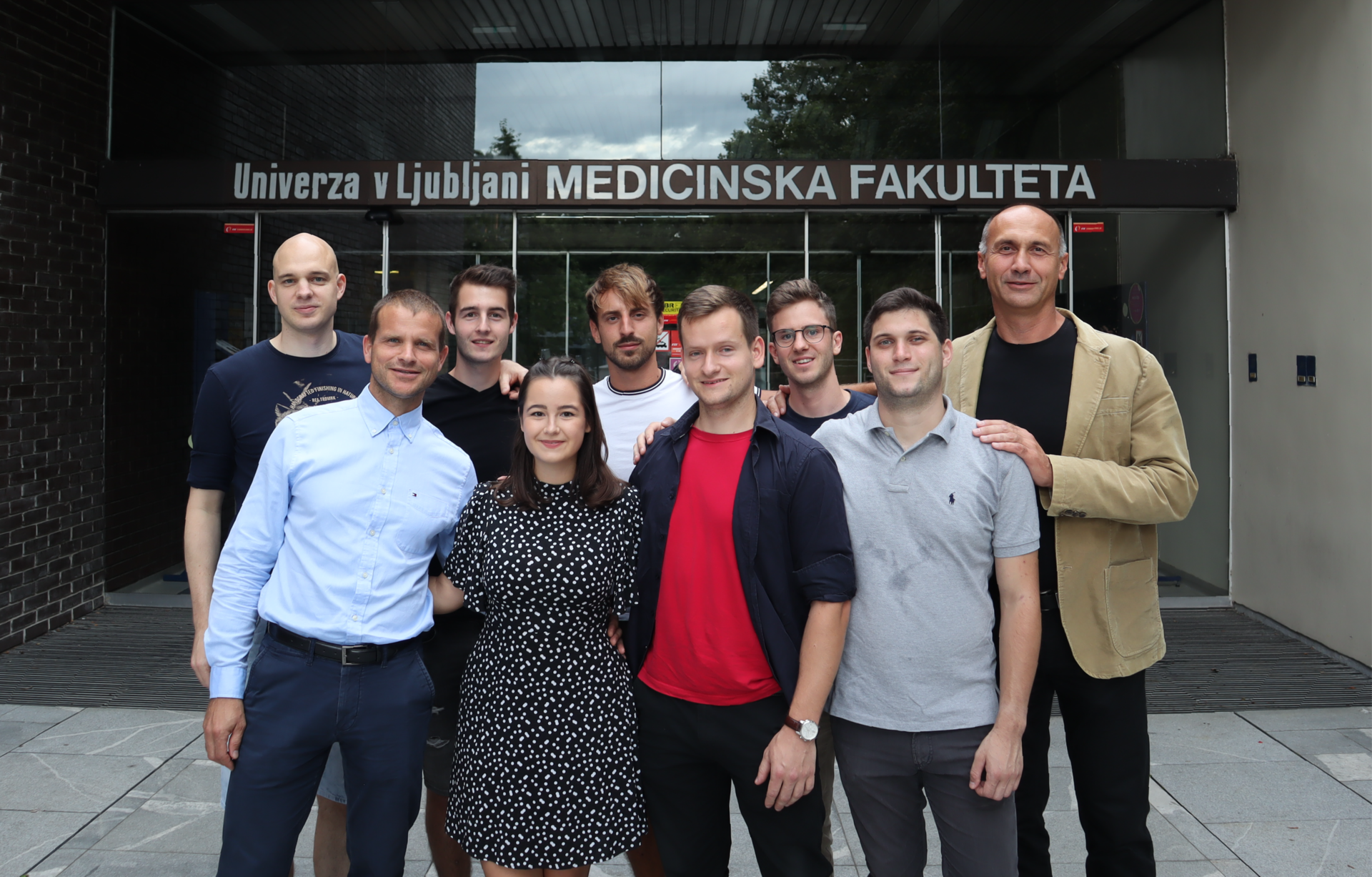Meet the team: SpaceDent
SpaceDent is an interdisciplinary team composed of 8 dentistry, mechanical and electrical engineering students from University of Ljubljana, Slovenia. The objective of their research is to assess whether the accuracy of dental tool handling in microgravity is controlled enough to provide safe and reliable astronaut treatment in space.
| University | Faculty of Medicine and Faculty of Mechanical Engineering, University of Ljubljana, Slovenia |
| Endorsing Professors |
Prof. Aleš Fidler, PhD, DMD, Assist. Prof. Simon Oman, PhD |
| Team | Tine Šefic, Mitja Dergan, Hana Prtenjak, Tomaž Tomšič, Tomi Štucin, Matic Hvala, Rok Gerbec, Tomaž Škapin |
During long-term missions to the Moon and Mars, isolation and microgravity could potentially have deleterious effects on human physiology, including oral health. To provide effective preventive measures, adaptation of dental procedures, equipment, and astronaut training will be necessary.
This is a preliminary study that aims to assess whether the accuracy of dental drilling and filling placement in microgravity is controlled enough to provide safe and reliable dental treatment in space. To conduct the research, two dentistry students will perform dental drilling and filling placement procedures during three parabolic flights, which will provide 30 minutes of simulated weightlessness. As a control group, these procedures will also be conducted under normal gravity during steady flight and when the plane is stationary on the ground.
To simulate a patient in a simplified dental clinic environment, a primary structure will be attached to the plane. This structure will be enclosed to prevent the spread of tooth drilling debris in microgravity, which could cause eye and respiratory irritation. Access will be provided through two openings with sleeves made of plasticized fabric.

3D scanning will be used to image the teeth before and after the drilling and filling procedures. The analysis will involve threshold image segmentation of a 3D model, which will then be compared to the baseline. Two-way ANOVA analysis will determine differences in absolute and signed error across microgravity, steady flight, and ground environments. Findings will serve as a foundation for evaluating and optimizing dental procedures, ensuring safe and effective treatment for astronauts in space.
To stay updated with SpaceDent, visit their website at spacedentproject.com. Connect with them on Instagram, Facebook, or YouTube: @spacedentproject
If this spiked your interest in the hands-on programmes offered by ESA Academy or if you have an experiment you would like to perform in altered gravity environments, then click here to learn more about the possibilities of performing your investigations at one of the platforms available for student experiments at ESA Academy.



